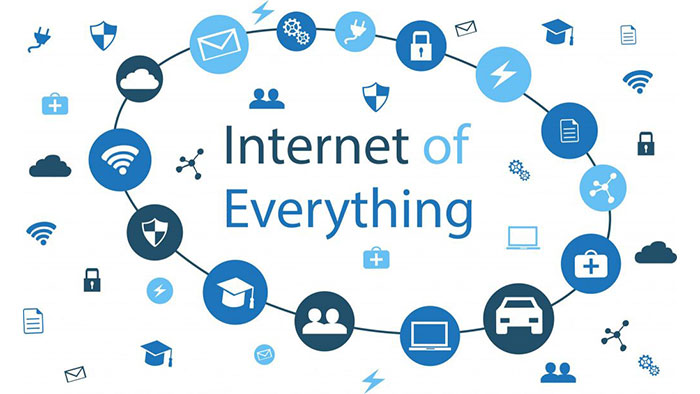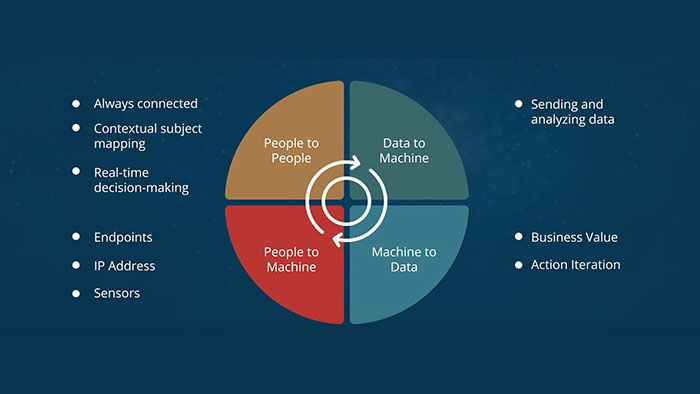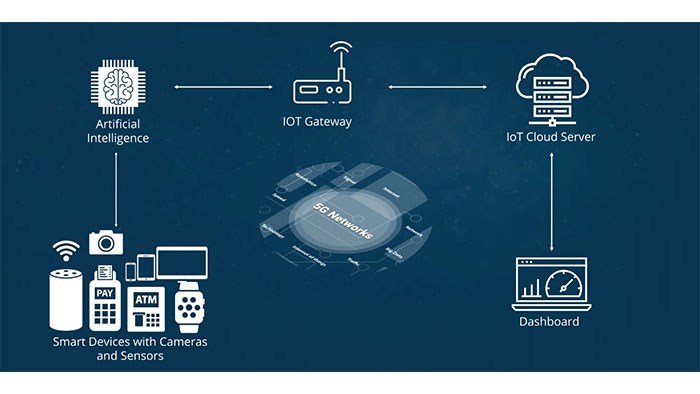
There are many value drivers to help the Internet of Everything (IoE) such as employee productivity, supply and logistics, customer experience, innovation, and time to market and asset utilization. All the factors are tightly linked to generating new revenue gains for any enterprise.
Time to market and innovation will help with a competitive index of the organization help to discover MVP, reduce the cost of building and bring improvement in customer experience. Asset utilization is the form of digital-physical and even smart assets discovery, and is the requirement for the establishment of the IoT ecosystem. The supply chain is also a key value driver that assesses the requirement of the Internet of Everything.

The Internet of Everything comes with a growth engine for any organization which includes people for the most valuable resources. The process of making the right effort the things that include the physical devices, other objects, and the data take it from sensors to make actual insights for decision making is important such as people, process, things, and data. The growth engine elements give the company an edge in the digital transformation world. The data privacy and transparency mechanism is important for every organization to follow internet ethics and compliance.
Fleet management is a classic example of IoT in the application. In this domain, IOT is mainly used to track vehicles from one point to another. Using IOT technology the entire fleet can be monitored with the support of RFID chips embedded within every car in the fleet. The same RFID can also be used to track products such as consumer goods, electronics, and food items. You can get real-time information on the routes that the fleet takes. Also, there are OVD devices that can be used to track vehicles’ behavior and performance including fuel consumption and mileage.
This can reduce the Total cost and provide a greater return on investment. According to a recent study, the IoT market will increase to eight point two eight billion dollars by 2021. Sensors linked to artificial intelligence, help the bankers track all the activities in the backend. The advancements of mobile phones and digital assistance along with 5G connectivity make the customer experience seamless.

Financial institutions have structured and unstructured data of the customers. They can slice and dice the data for profiling, segmentation, product launches, and digital services enablement. The data can create a large economic drive and give rise to new business models, like NFC banking, digital assistance banking, and social media banking. With this transformation, the Internet of Things provides a competitive advantage to the banking, insurance, and financial services.
While the end goal remains to help customers save money and give a bundle offer. Let’s understand how IOT revolutionizes various industries. With the advent of the Internet of Things, there are many industries experiencing a digital transformation, such as financial services, healthcare, manufacturing, communications, energy, retail, and transportation. IoT has initiated changes at all levels, users, infrastructure, and large-scale applications. Analytics with a real-time dashboard and IOT support lets informed decision-making for businesses.
Cisco company as an industry leader has paid a lot of attention to IoT. Customers can benefit from Cisco Catalyst 9000 series (c9000) to maintain connectivity between various objects by providing UPOE Ethernet ports. Plus, the Cisco Identity service engine (Cisco ISE) as an access control policy engine can handle different scenarios for numerous objects in order to control them entirely. These products, all together, can leverage flexibility and adaptability for whole network devices resulting in less complexity in the environment.